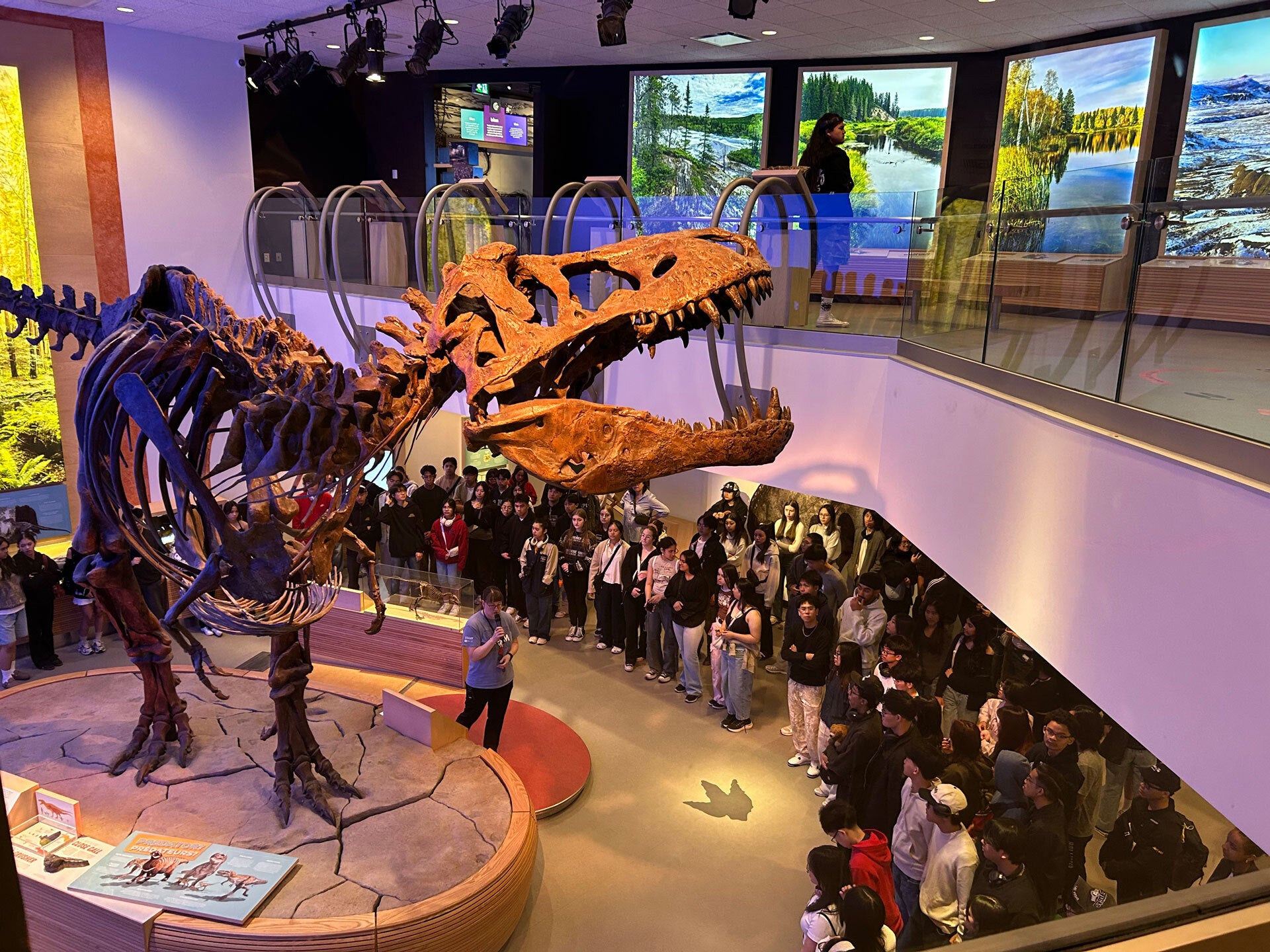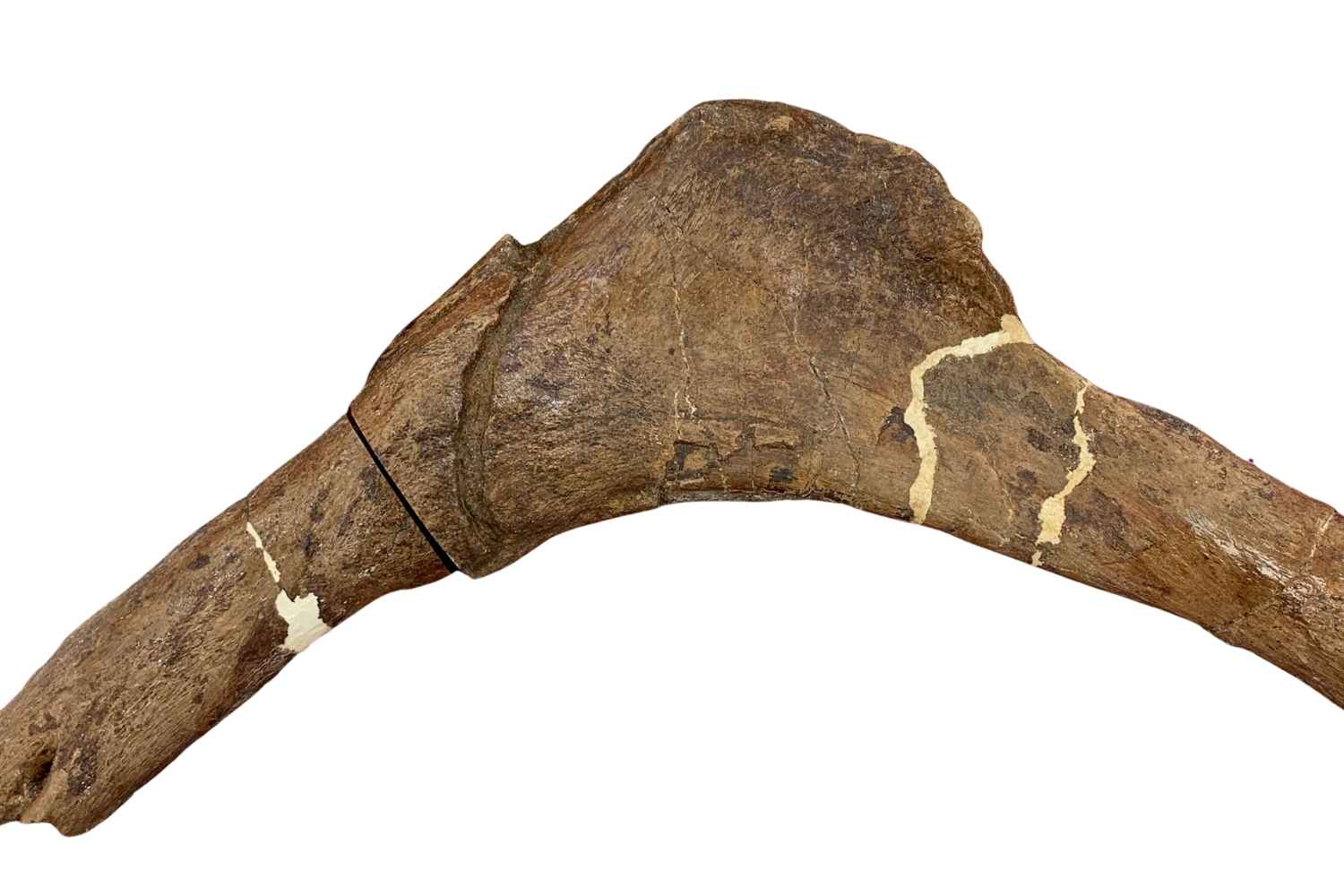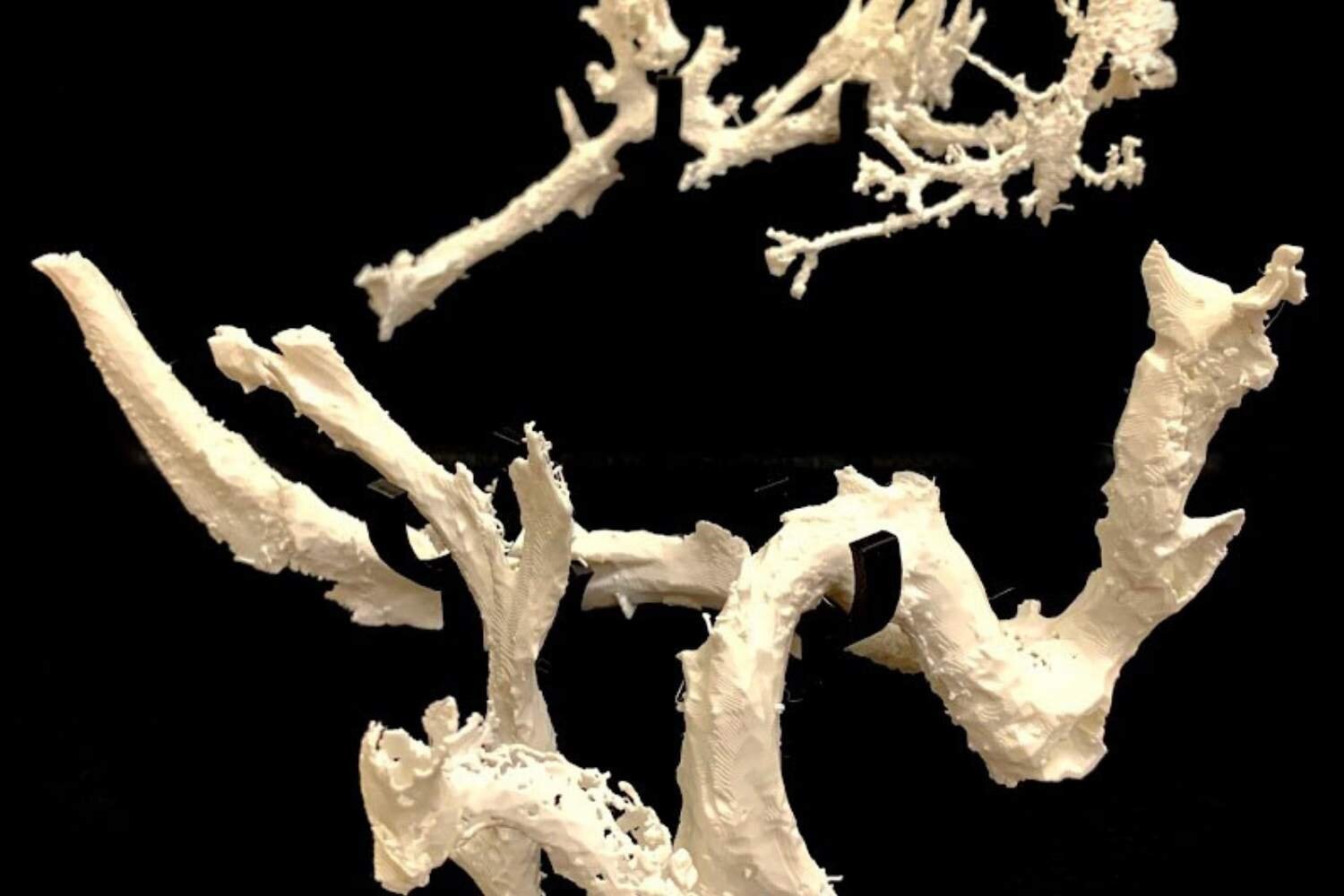Blood vessel structures found preserved in a famous T rex fossil are helping scientists understand how dinosaurs healed from injuries.
A study published recently in the journal Scientific Reports analyses structures found inside a rib bone from Scotty, the world’s largest known Tyrannosaurus rex unearthed in Saskatchewan, Canada, in the 1990s.
Scotty, nicknamed for a celebratory bottle of scotch used the night it was discovered, likely had a living weight of over 8.8 tonnes.
It may have been one of the oldest T rexes of its time, living an unusually long and violent life well into its early 30s.

Previous studies of Scotty have highlighted pathologies on the monstrous dinosaur, including scarred bone spots recording large injuries.
In recent times, the convergence of a combination of techniques such as chemical analysis using radiation from particle accelerators, 3D scanning, and computerised model-building has facilitated better studies of preserved soft tissue in dinosaur fossils.
Researchers first spotted a strange structure inside a scan of Scotty’s rib and quickly realised they could possibly be preserved blood vessels.
Then, using X-ray scans, they created a detailed 3D model of both the T rex bone and the soft tissue structures inside them without damaging the 66-million-year-old fossil.
Scientists also used chemical analysis techniques to identify the different elements and molecules making up the blood vessel structures.
This allowed them to theorise how the structures were preserved over millions of years.
“Here we show characterisation of a network of large vessel-like structures in a rib from ‘RSKM P2523.8’ (Royal Saskatchewan Museum), an exceptionally robust Tyrannosaurus rex found in the Late Cretaceous Frenchman Formation, Saskatchewan, Canada,” scientists wrote in the study.

Bones undergoing fractures can lead to rapid increase in blood vessel activity to facilitate healing.
“New vessels branch off of old vessels from the normal bone and expand towards the fracture in order to bring nutrients to facilitate the healing of the injury,” scientists explained.
Researchers found such signs of a healed fracture in one of Scotty’s ribs, likely from fighting with another dinosaur.

The finding, according to scientists, could provide important insights into the healing potential of a T rex.
“Preserved blood vessel structures, like we have found in Scotty’s rib bone, appear linked to areas where the bone was healing. This is because during the healing process, those areas had increased blood flow to them,” said Mauricio Barbi, co-author of the study from the University of Regina in Canada.
“This work also provides a new way to compare how injuries healed in extinct animals, like dinosaurs, with living species, such as birds and reptiles, which helps us better understand the biology of the past, and also how life on Earth has evolved over millions of years.”
Researchers hope such signs of bone healing and regrowth can offer a promising target for future studies to better understand dinosaur soft tissue structures.
New species of flying reptile that lived among dinosaurs 200m years ago discovered
The Last of Us zombie fungus hijacked minds as early as dinosaur era, study finds
Chance discovery of 365-million-year-old fossil reveals new species
Breakthrough gene therapy jab reverses hearing loss in weeks
Scientists find subtle new early signs of Parkinson’s
India’s pollution crisis found linked to rising pre-term births and low birth weight







